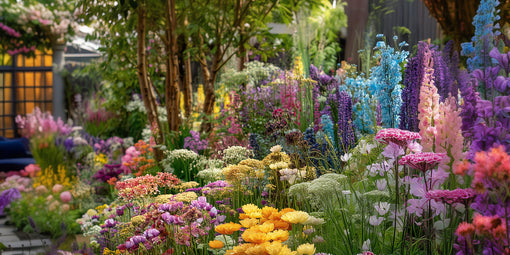
- Article published at:
Drawer menu
Since we are completely obsessed with British flowers, we can't wait to share with you all the amazing blossoms that are available throughout the year.
Living in the UK gives us the opportunity to experience first hand the magic of seasonal flowers and how they can brighten up even the gloomiest of days. From delicate snowdrops in the spring to vibrant dahlias in the autumn, there is something truly special about seeing the changing landscape of flowers throughout the year.
In this blog post, we're going to take you on a journey through the seasons and share with you some of our favourite British flowers that you simply must get your hands on! So, let's dive in and discover the best seasonal blooms that the UK has to offer!
Spring is a magical season for British flowers! As the days get longer and the weather gets warmer, the countryside bursts into a riot of colors with blooms. Here are some of the stunning flowers that you can find in the UK during spring:





Summer in the UK is truly a delight for flower lovers! The long days, warm sunshine, and abundance of stunning flowers in every direction make it a season to remember. Here are some of the amazing flowers that bloom in Britain during summer:





Autumn may be a time when the leaves start to fall, but that doesn't mean we have to say goodbye to stunning blooms! In fact, there are plenty of amazing flowers to be found during this time of year. Some of the flowers that are in season in Britain in Autumn are:






In the UK, winter may be associated with cold and darkness, but that doesn't mean that there aren't any flowers to be found. In fact, some of the most beautiful blooms can be seen during the winter months.




Well, there you have it guys - a journey through the seasons of British flowers! From the vibrant hues of summer to the delicate blooms of spring, the UK is home to some of the most stunning flowers in the world.
We hope this post has inspired you to get out and explore the amazing variety of flowers that the UK has to offer, and maybe even try growing a few of your own. There's nothing quite like watching a tiny seedling grow into a beautiful flower, and with the right care and attention, anyone can become a successful gardener.
So go forth and enjoy the beauty of British flowers, and let nature work its magic on your soul. Happy gardening, fellow flower lovers!
We hope you haven't missed out on our latest collection of LÖV Letterbox Flowers, filled with sensational, seasonal blooms!